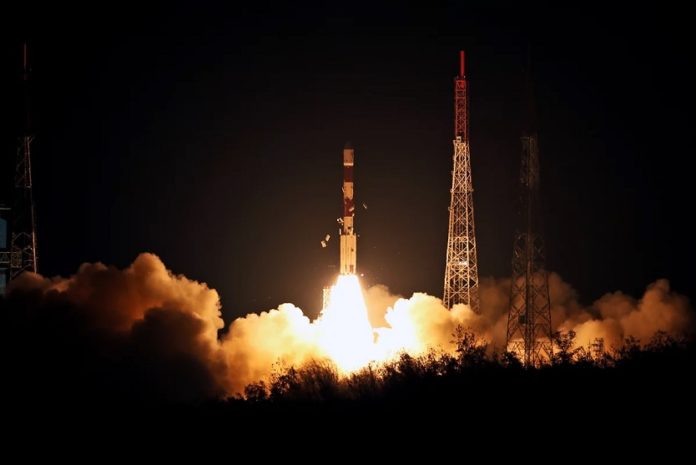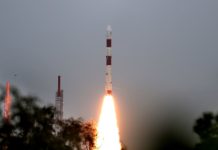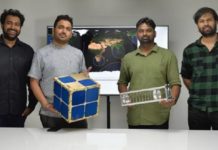Indian Space Research Organisation successfully launched IRNSS-1I into Geosynchronous orbit (GSO) using the Polar Satellite Launch Vehicle C41 on Thursday morning, April 12, 2018 at 0404 (IST) from its Satish Dhawan Space Centre spaceport at Sriharikota. The launch was the 43rd flight of the PSLV. It also marked the shortest time span between missions from the spaceport, as the GSAT-6A was launched just two weeks ago.
For the first time, the launch vehicle incorporated indigenous friction stir welding technology in propellant tank manufacture, which according to a statement by ISRO Chairman Dr. K Sivan, will “improve productivity and enhance payload capability of the vehicle”. Sivan also said that industry participation when it came to satellite manufacturing was enhanced, with ISRO “slowly moving towards both the vehicle and the satellite going through the [private] industry.”
The satellite was manufactured by Alpha Design Technologies, a private space and defense company based in Bengaluru, under the supervision of ISRO Satellite Centre (ISAC). With a lift-off mass of 1425 kg like all of its predecessors, it carries an L5 and S-band navigation payload with Rubidium Atomic Clocks on board. The mission duration of each satellite is projected to be 10 years.
S Pandian, Director, ISRO Propulsion Complex, revealed that it was the “107th Vikas Engine and 86th PSLV Fourth Stage (PS4) engine” that flew in this particular mission, “which shows that very good synergy exists between ISRO centers, and the PS4 will be able to achieve multi-orbit, multi-satellite injection capability.”
The IRNSS-1I is the seventh operational satellite in the NavIC constellation after two satellites that are considered non-operational — IRNSS-1H (because of non-separation of payload fairing) and IRNSS-1A (because of atomic clock failure). For the satellite to be completely integrated into the NavIC system will take nearly one month as there are four maneuvers to be completed, according to Dr. M Anndurai, Director, ISAC. This will complete Phase 1 of the constellation, though India’s plan is to increase the number of satellites in the constellation from 7 to 11 in the coming years.
Sivan said: “This NavIC constellation is going to create history, and going to make innovative applications with the entire community in position-based services, especially for the ‘under-served’ and the ‘un-served’.” He commented on the fact that there is an NavIC app that will be released soon, and requested industry and institutions to come forward and “take the applications to the user community”.
According to ISRO, the Indian Regional Navigation Spacecraft System (IRNSS) envisages establishment of a regional navigation system using a combination of GEO and GSO spacecraft. IRNSS system is expected to provide position accuracy of better than 20 m over Indian region and an area extending about 1500 sq km around India. IRNSS constellation consists of three GEO spacecraft and four GSO spacecraft inclined at 29 deg. It aims to provide two types of services: Standard Positioning Services (SPS) — provided to all users — and Restricted Services (RS), provided to ‘authorized users’.







